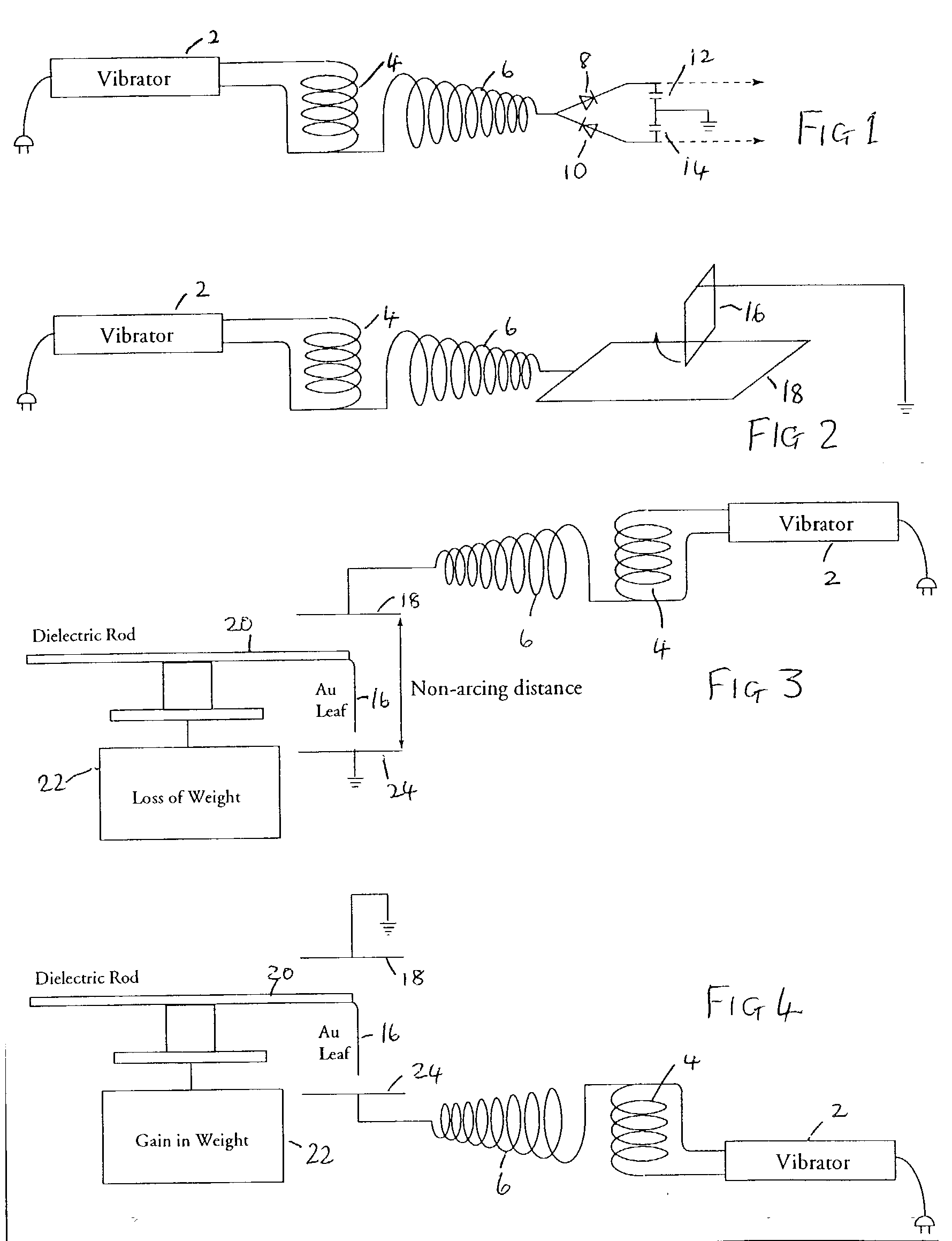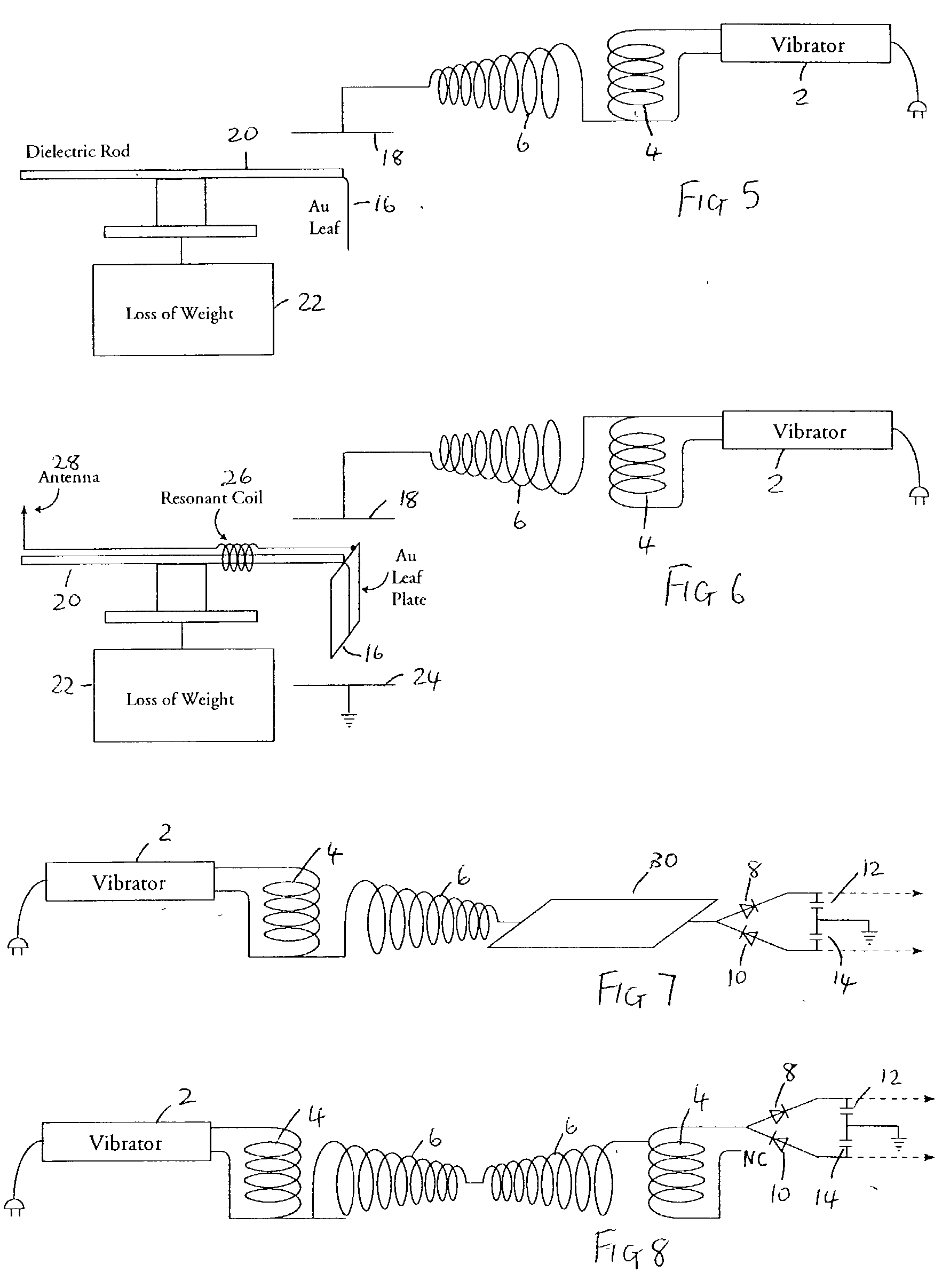Energy conversion systems
a technology of energy conversion and energy, applied in the direction of dynamo-electric converter control, motor/generator/converter stopper, generator/motor, etc., can solve the problem of limiting applications to locations outside the earth's, and achieve the effect of reducing slippage and consuming a lot of power in that heating
- Summary
- Abstract
- Description
- Claims
- Application Information
AI Technical Summary
Benefits of technology
Problems solved by technology
Method used
Image
Examples
Embodiment Construction
[0045] Based upon observations of weight loss in metallic matter as induced by exposure to high frequency alternating electric fields, we developed an experimental method to optimize this-weight loss, and from this a device that treats the forces causing weight loss as manifestations of intrinsic potential energy ΔU (or true “latent heat”) of the molecules of matter, and converts both “true latent heat” energy present in the neighbourhood of a receiver, and “sensible” heat induced within that receiver, into electric energy that can be employed to drive a motor, flywheel or charge battery supplies.
[0046] It is commonly believed that the output of the Tesla coil is ionizing electromagnetic radiation. We have demonstrated that it is not; i.e. that it is neither electromagnetic radiation, nor ionizing electromagnetic radiation. The output of an air cored, sequentially-wound secondary, consists exclusively of electric energy: upon contact with the coil, a massbound AC current can be ext...
PUM
 Login to View More
Login to View More Abstract
Description
Claims
Application Information
 Login to View More
Login to View More - R&D
- Intellectual Property
- Life Sciences
- Materials
- Tech Scout
- Unparalleled Data Quality
- Higher Quality Content
- 60% Fewer Hallucinations
Browse by: Latest US Patents, China's latest patents, Technical Efficacy Thesaurus, Application Domain, Technology Topic, Popular Technical Reports.
© 2025 PatSnap. All rights reserved.Legal|Privacy policy|Modern Slavery Act Transparency Statement|Sitemap|About US| Contact US: help@patsnap.com



